
The post LG G8X ThinQ Dual Screen Review: Double the screens, double the weight appeared first on MobileSyrup.

Since 2015, LG’s mobile division has attempted a variety of gimmicks with its flagship smartphones.
For example, there was the second screen featured in the LG V series, and then the LG G5 and its modular ‘Friends,’ ‘Air Motion’ on the G8 ThinQ and the secondary attachable display featured in the V50 ThinQ — which didn’t make its way to Canada.
Now, LG is launching the G8X in Canada. The company initially revealed the handset at IFA Berlin in September. Similar to the V50, the G8X offers an attachable secondary display. While some of these previous gimmicks were less than stellar, the G8X ThinQ’s attachable screen is surprisingly useful.
Right off the top, it’s important to mention that the G8X ThinQ is not the smartphone for me, but I think those who value productivity, enjoy bigger screens or playing mobile games, will find this device a viable contender.
The LG G8X ThinQ isn’t the successor to the LG G8, so its specs aren’t necessarily better than the handset that came out earlier this year. This is particularly evident when it comes to the smartphone’s display.
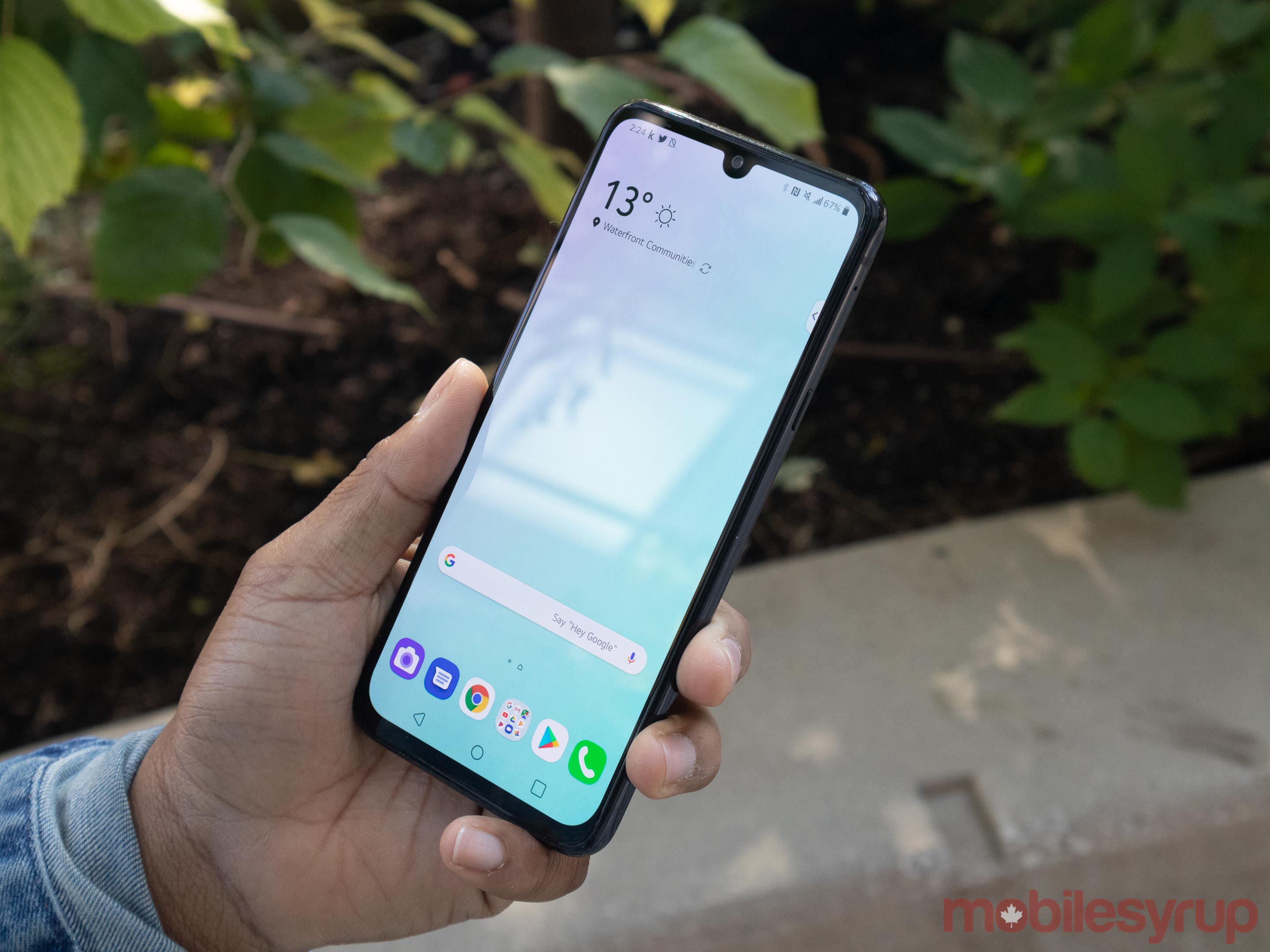
The G8X ThinQ features a 6.4-inch OLED with a 1080 x 2340 pixel resolution, 19.5:9 aspect ratio and 403 pixels per inch (PPI) display. The resolution is inferior to what is featured in the G8 ThinQ, but it’s still quite good. Images look crisp and detailed, and someone who is used to 1080p screens would likely think it’s great.
That said, when watching content that offers up to 4K resolution like BBC’s Planet Earth on Netflix, and comparing it side-by-side with a device like a Pixel 4 XL, most will probably notice the difference in quality.
The G8X ThinQ offers up to 600 nits of brightness, and during my time with the device, I haven’t experienced any issues with the display not being bright enough under direct sunlight. However, even though LG says the G8X and its additional display are the same, I’ve noticed the attachment screen doesn’t get quite as bright. Everything else about the secondary screen is identical to the main G8X.
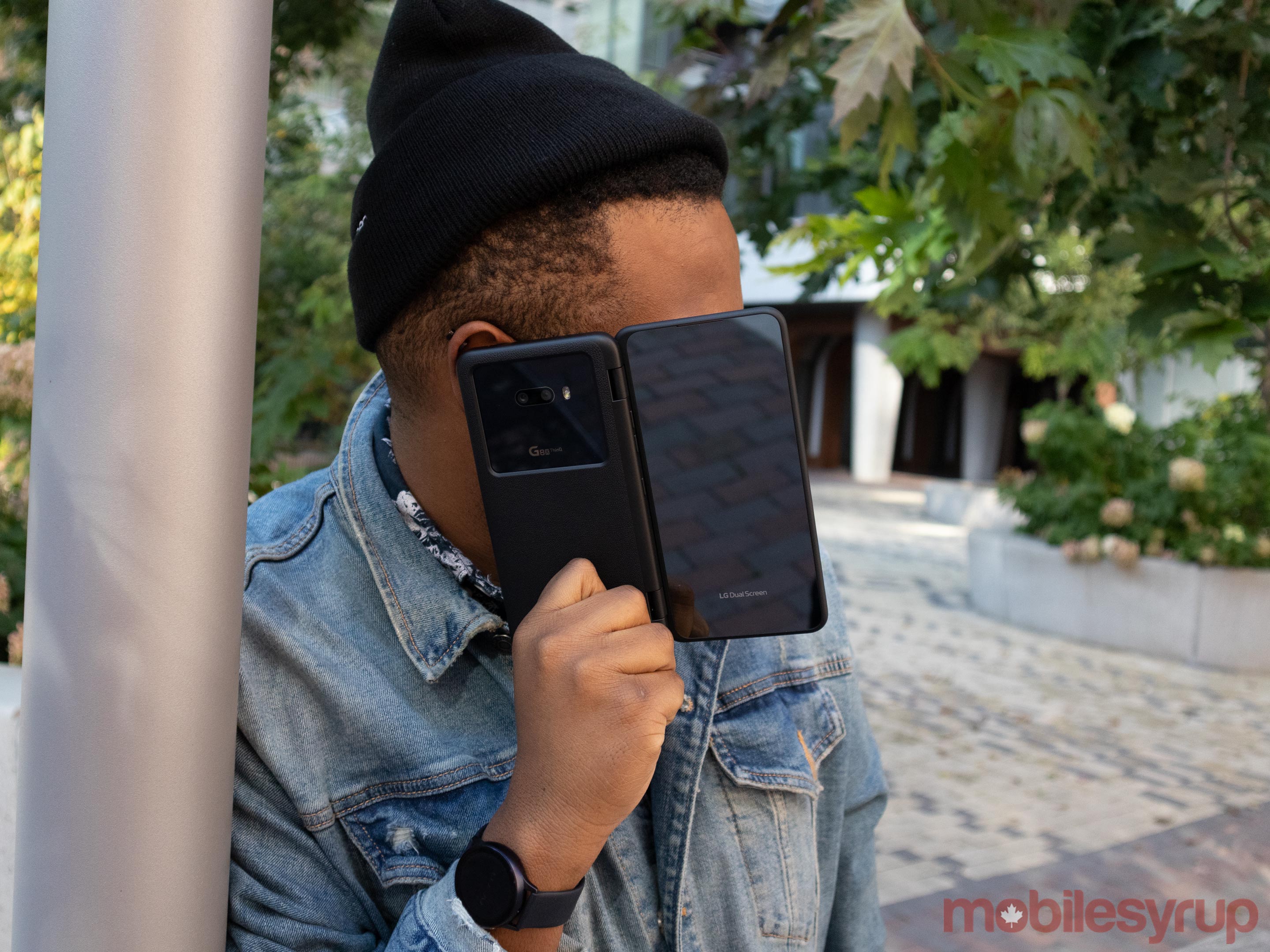
The LG G8X ThinQ feels premium in-hand with Gorilla glass on the front and the back, alongside a solid-feeling aluminum frame.
Instead of an iPhone X-style notch like the G8 had, the G8X offers a smaller waterdrop cutout. Just by looking at it, you can tell LG ditched face scanning and its Air Motion technology, which isn’t a bad thing.
Other than the size and weight, the G8X feels similar to the G8. The phone offers a flat screen with a slim bezel running around the device. The handset also features rounded sides, like the G8, which make it comfortable to hold.
Similar to the G8, the phone sports its power button on the right. On the left, it features a volume rocker and a dedicated Google Assistant button.
The back of the device is sleek and completely lacks a camera bump, though it sports dual rear-facing shooters. LG ditched the physical fingerprint scanner for an in-display variant.
The G8X’s sensor is optical, which offers less security than ultrasonic in-display technology. The scanner, unfortunately, doesn’t always work well, and I often had to try multiple times before it activated. It reminds me of the OnePlus 6T’s scanner, as I experienced the same problem with that handset.
The device’s speaker grill and 3.2mm headphone jack flank its USB-C port on the bottom. The G8X on its own doesn’t look that different from the G8, but adding the second screen attachment switches things up.
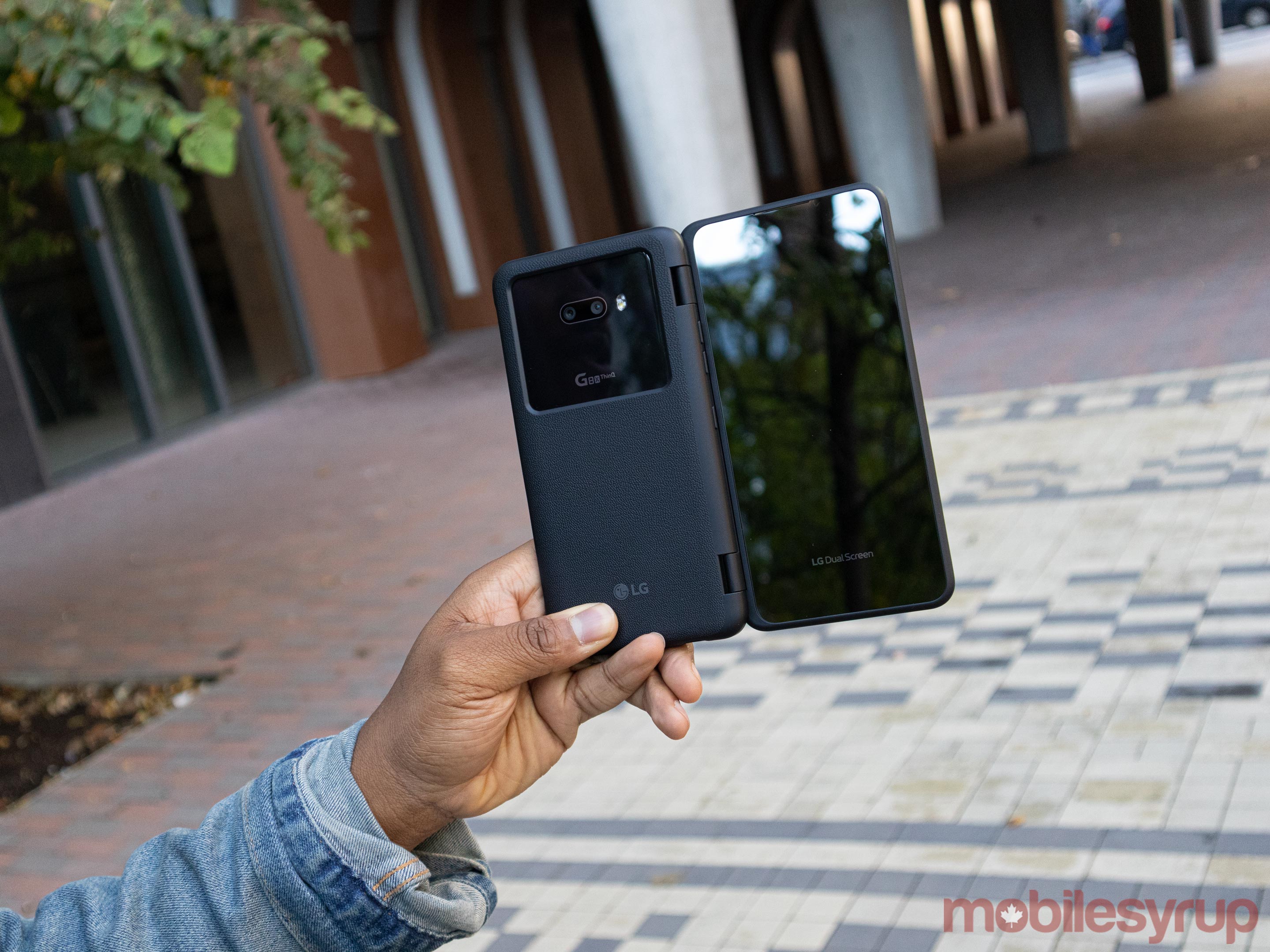
After attaching the secondary screen, the G8X is noticeably a lot heavier. Totalling at 326g, it weighs more than most gaming phones, the Galaxy Fold and the Mate X. Occasionally, I got tired of holding the G8X because the handset and the case together are just too heavy.
The secondary screen also features a fake notch and speaker grill. LG says it did this so that both displays look the same, but I’d rather they didn’t. The case itself feels well built and like it can take a hit.
On the front of the case, there’s a 2.1-inch monochromatic screen that only offers the time, the date, a few notifications and the device’s battery percentage. It’s also so reflective that you can use it as a mirror. Around back, there’s a big open square so that the cameras, LED flash and G8X ThinQ branding remain unobstructed. The phone would have looked a lot better in the case if LG made the cutout smaller to only fit the cameras and the dual-LED flash.
The case sports a 360-degree hinge that allows it to swivel to the back. I often used the G8X ThinQ like this, with the case and the display back to back. That way, the secondary screen was always ready when I wanted to use it, and it wasn’t in the way.
Unfolded, the G8X doesn’t lay flat since this would block the phone’s volume rocker and Assistant button.
The case also adds more bezel to the bottom of the device. When open, the case has a rather large hinge in between the two screens. There is a way to extend the display across both screens on specific apps, but I’d advise not to do this because it doesn’t look great.
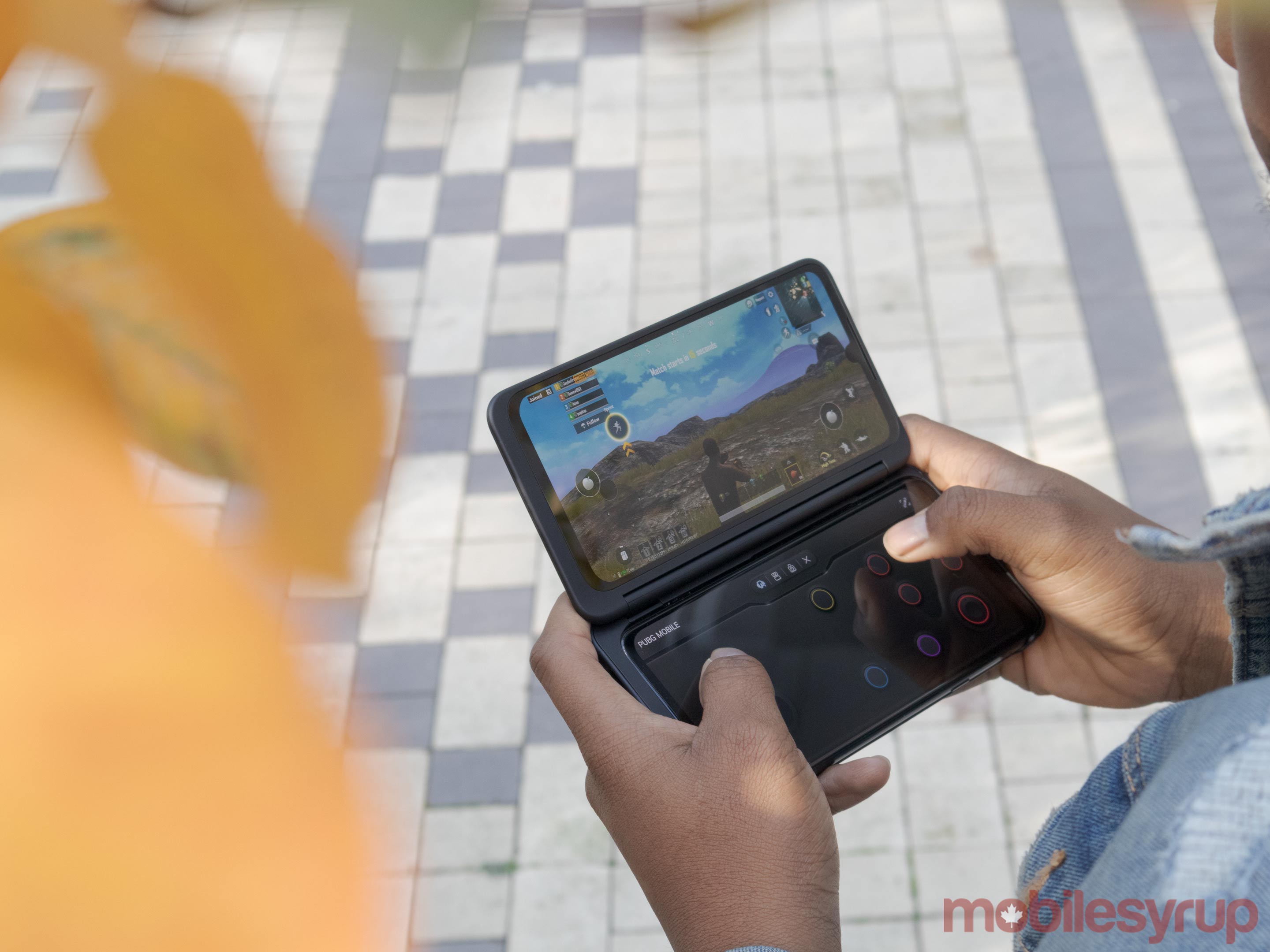
While I initially found that the secondary screen attachment looked gimmicky, it grew on me during my time testing the phone. And it was easy to use, as a three-finger swipe gesture lets you move content from one screen to the other
The dual-screen has a variety of use-cases, but my favourite so far is the LG Game Pad. When playing PUBG with the dual screens, I turned the main display into a custom controller, with the second screen showing off the game. This felt odd at first, but after getting six kills and taking home a ‘Chicken Dinner,’ I walked away impressed with the design.
On top of gaming, the secondary screen can turn into a keyboard. With LG’s keyboard, you can split it so that it’s easily accessible with both hands.
When you’re taking pictures, you can view previous images with one screen and take shots with another. If you take the perfect photo, you can pull up a messenger app, and in your conversation with a friend, there’s a share button on the keyboard. By tapping this, the phone will automatically screenshot whatever is on one side and send it to the other.
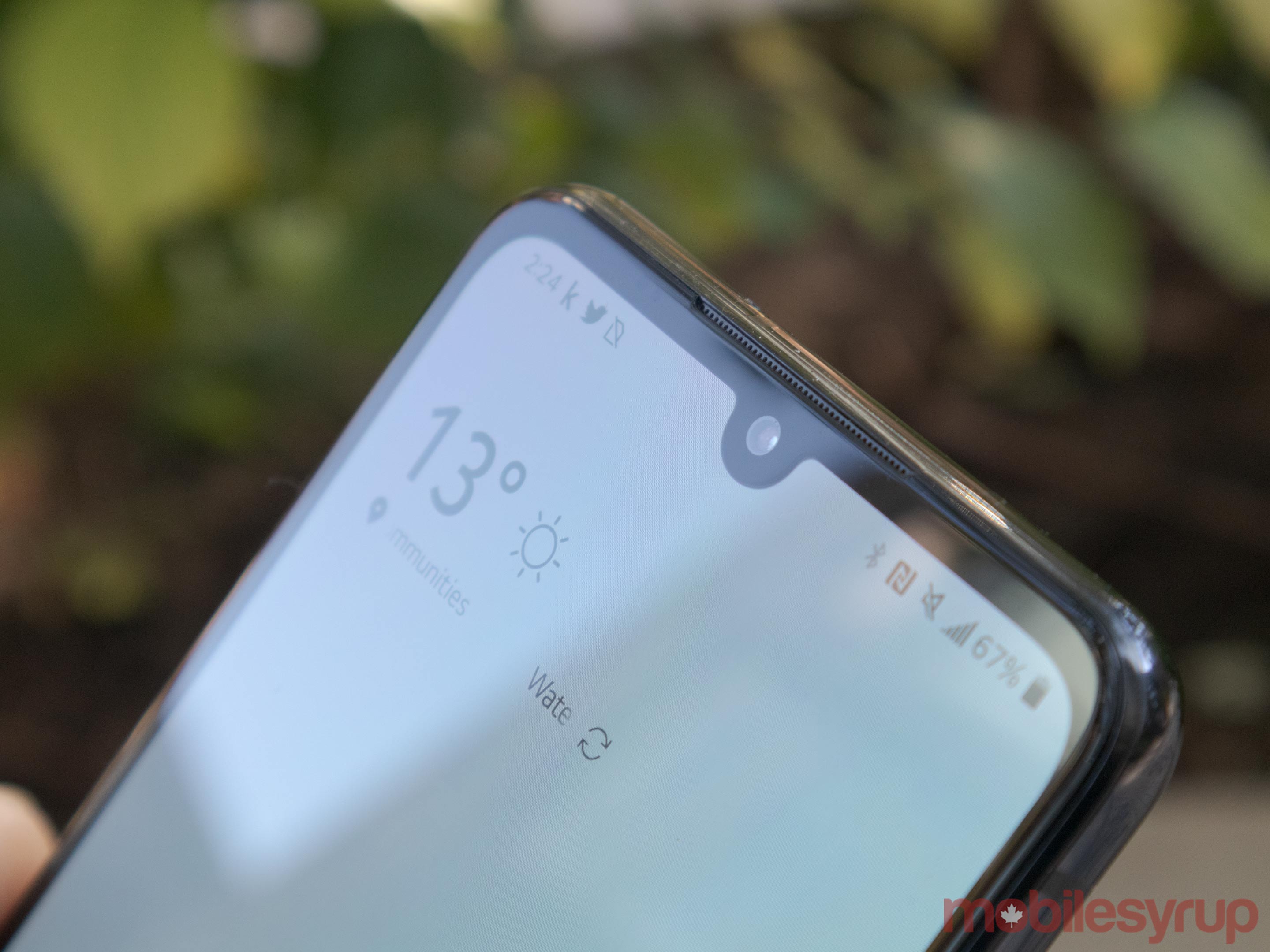
This is a feature I found very useful. LG also implemented a second browser, which allows users to run two different web browsers at the same time. If you’re not a fan of LG’s browser, you can grab Firefox or another browser from the Play Store.
The 360-degree hinge also works similarly to a 2-in-1 laptop, which means it’s suitable for media consumption without needing to hold the device.
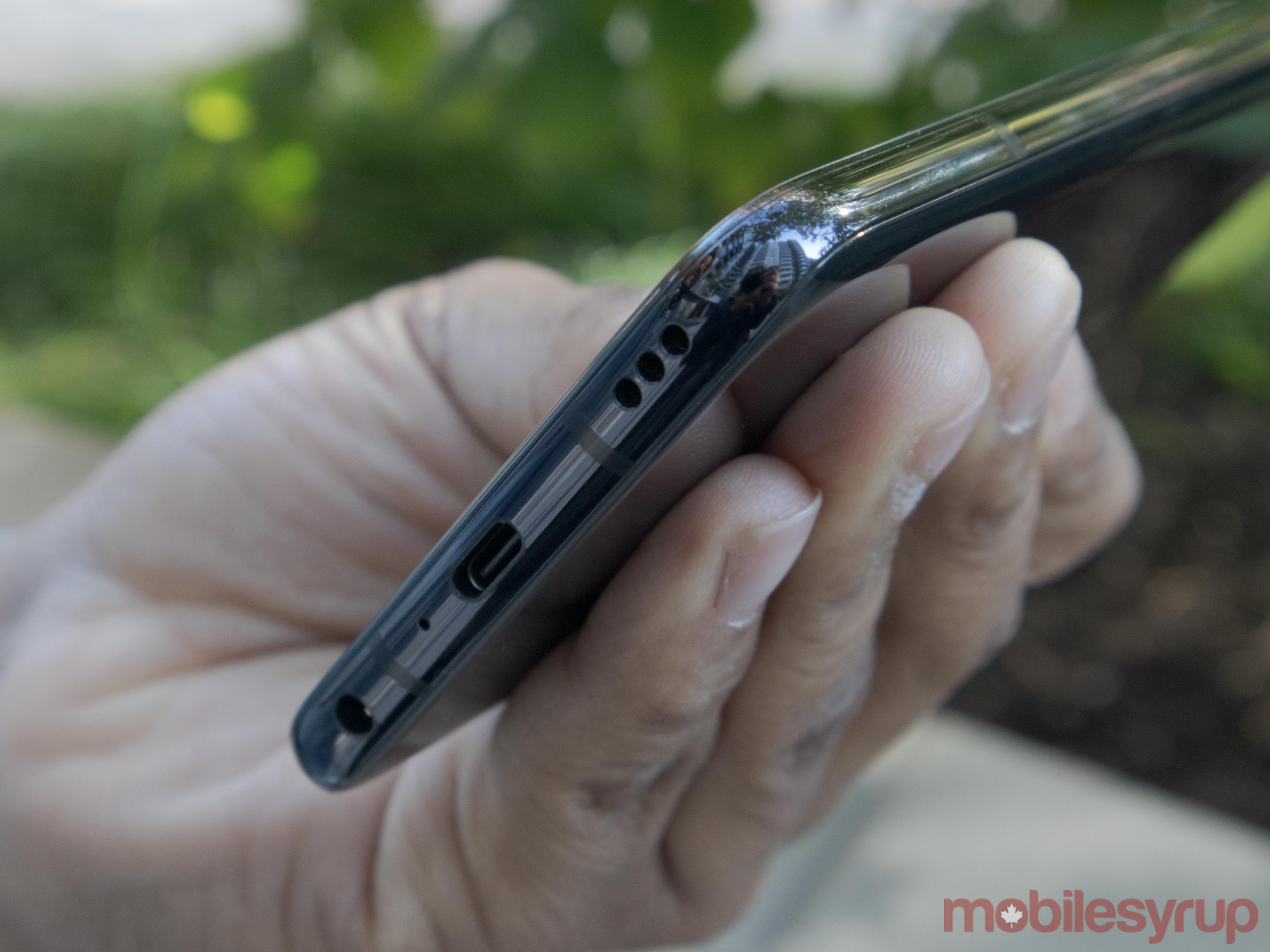
LG’s G8X ThinQ sports a 4,000mAh battery, which is 20 percent more than the G8 ThinQ. However, LG says the secondary screen increases battery consumption by 20 percent, as the battery is required to power two displays.
I found even with the screen attached, the LG G8X ThinQ was able to make it through the day with about 15 to 20 percent battery life remaining. Without the second screen, I found the device made it through the day with about 35 percent battery.
The G8X ThinQ features a Qualcomm Snapdragon 855 processor with 6GB of RAM. During my time with the device, I rarely experienced slowdowns while jumping between apps. With the secondary screen attached, the phone occasionally slowed down, and scrolling became choppy. These issues didn’t ruin the experience, but are worth noting.
One of the best things about the LG G8X ThinQ is the detailed sound with solid bass its speakers provide.
The LG G8X features stereo speakers that make the phone quite loud. One of the speakers faces frontwards and the other downwards. While I prefer two front-facing speakers, G8X’s audio is impressive.
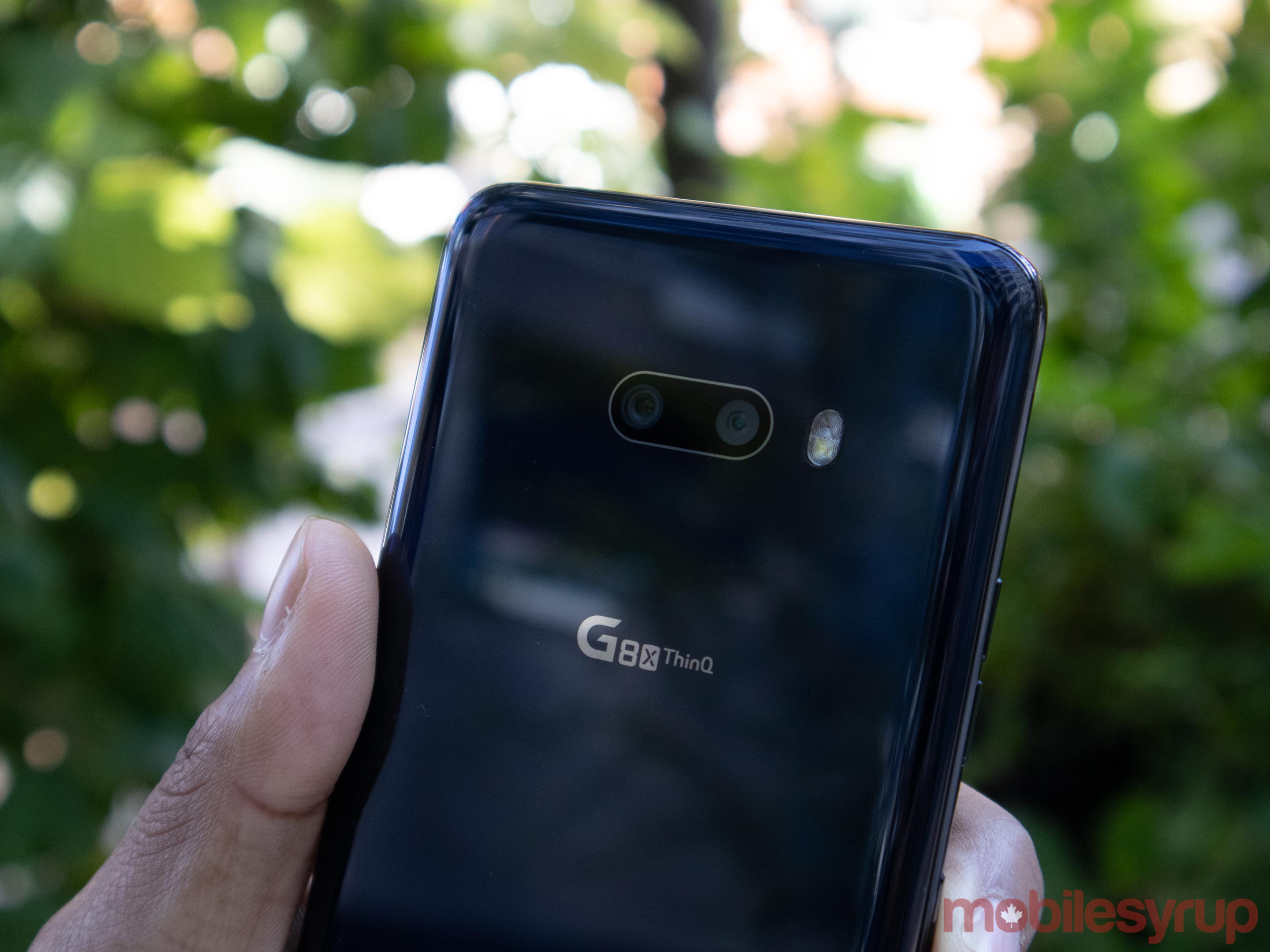
Similar to Huawei, Samsung and Motorola, the LG G8X ThinQ’s camera offers scene detection, allowing the phone’s artificial intelligence (AI) to identify what is present in an image and adjust the camera settings accordingly.
For example, when you’re taking a picture that features the sky, the scene detection saturates the resulting image and makes it bluer. The device over saturates pictures of flowers and the sky, but not landscapes or people. For people, the device seems to turn up the highlights, which backfires when the person is wearing a white shirt.
Pictures taken by the LG G8X ThinQ are decent. It was able to retain colours quite well. In every image, colours seemed accurate, and when colours weren’t, it was usually because of the AI.
Images look good, but you’ll notice the phone over sharpens objects like bricks, hair and leaves, creating what looks like a loss in detail.
The device also features a ‘Night View’ feature that attempts to make pictures brighter under dark lighting conditions, but these images become soft and feature even fewer details. Apple’s, Google’s and Huawei’s version of night time photography work a lot better.
LG upgraded the G8’s 8-megapixel selfie camera to a 32-megapixel lens but the selfie camera still overexposes the background and doesn’t show much detail with some facial features like beards.
The post LG G8X ThinQ Dual Screen Review: Double the screens, double the weight appeared first on MobileSyrup.
30/10/2019 02:00 PM
30/10/2019 01:22 PM
30/10/2019 07:35 PM
30/10/2019 03:00 AM
30/10/2019 10:21 AM
30/10/2019 08:31 PM
30/10/2019 05:11 AM
30/10/2019 11:08 PM
2014 © Canadian apps and news